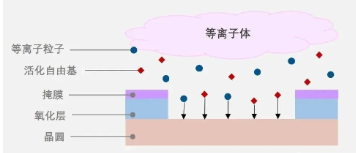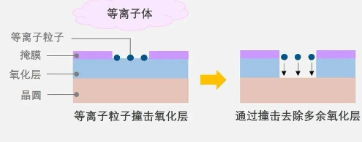QQ咨询:3030666790
asdasdasdas
After photolithography of the circuit diagram is completed on the wafer, the etching process is used to remove any excess oxide film and leave only the semiconductor circuit diagram. This requires the use of liquids, gases or plasmas to remove selected excess.
Etching methods are mainly divided into two types, depending on the materials used: wet etching using a specific chemical solution for chemical reaction to remove the oxide film, and dry etching using gas or plasma.
1. Wet etching
Wet etching using chemical solution to remove oxide film has the advantages of low cost, fast etching speed and high productivity. However, wet etching is isotropic and its velocity is the same in any direction. This will cause that the mask (or sensitive film) and the etched oxide film cannot be fully aligned, so it is difficult to process very fine circuit diagrams.

2. Dry etching
Dry etching can be divided into three different types.
① Chemical etching
It uses etching gas (mainly hydrogen fluoride). Like wet etching, this method is also isotropic, which means it is not suitable for fine etching.
② Physical sputtering
That is, the ions in the plasma are used to strike and remove the redundant oxide layer. As an anisotropic etching method, the etching speed of sputtering etching is different in the horizontal and vertical directions, so its fineness is also higher than that of chemical etching. However, the disadvantage of this method is that the etching speed is slow, because it completely depends on the physical reaction caused by ion collision.

③ Reactive Ion Etching (RIE)
RIE combines the first two methods, namely, using plasma to conduct ionization physical etching, and using free radicals generated after plasma activation to conduct chemical etching. In addition to etching faster than the first two methods, RIE can take advantage of the characteristics of ion anisotropy to achieve etching of high precision patterns.
Nowadays, dry etching has been widely used to improve the yield of fine semiconductor circuits. It is very important to maintain the uniformity of full wafer etching and improve the etching speed. Today's most advanced dry etching equipment is supporting the production of the most advanced logic and memory chips with higher performance.